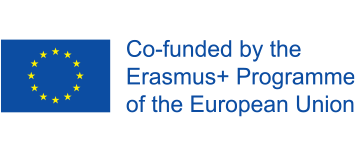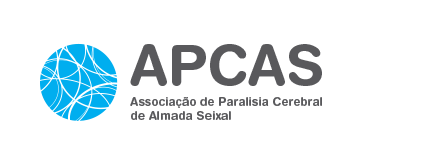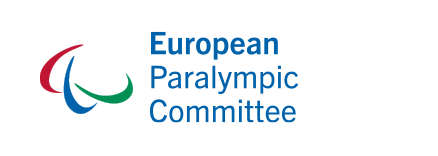MATERIALS TO SUPPORT THE IMPLEMENTATION OF INCLUSIVE SPORTS ACTIVITIES
CHAPTER III
This chapter aims to address the issue of support materials for the implementation of inclusive sports activities, as many sports and physical activities activities involve the use of materials and, as mentioned above, the adaptation to materials / equipment are essential facilitators of performance activities, promoting participation and the inclusive process.
As mentioned in chapter I, in both STEP model and TREE model, one of the adaptation components is “E-Equipment”:
E | Equipment | Alteration or adaptation of more appropriate equipment to promote participation and performance in the activity |
|
Thus, it is considered that in daily and regular professional practice, the concern in adapting the material / equipment takes into account three dimensions: the adaptation of materials, the use of specific materials for the task / modality and the use of assistive technology devices (ISO 9999:2016).

Regarding assistive technology device, these include products, devices, equipment, or technical systems that enable the prevention, improvement, or maintenance of an individual’s functionality, avoiding or neutralizing limitations on involvement and / or restrictions on individual participation in the most diverse contexts of life. The prescription of these products aims to promote the autonomy and quality of life of persons with disabilities and apply to any context of participation of persons with disabilities (WHO & UNICEF, 2015).
According to the Convention on the Rights of Persons with Disabilities (UN, 2006), it is assumed that:
“…(g) To undertake or promote research and development of, and to promote the availability and use of new technologies, including information and communications technologies, mobility aids, devices and assistive technologies, suitable for persons with disabilities, giving priority to technologies at an affordable cost;
(h) To provide accessible information to persons with disabilities about mobility aids, devices and assistive technologies, including new technologies, as well as other forms of assistance, support services and facilities;…” (Article 4-General obligations)
“…(b) Facilitating access by persons with disabilities to quality mobility aids, devices, assistive technologies and forms of live assistance and intermediaries, including by making them available at affordable cost;…
(d) Encouraging entities that produce mobility aids, devices and assistive technologies to take into account all aspects of mobility for persons with disabilities.” (Article 20-Personal mobility)
According to ISO 9999: 2007 the approved list of support products includes products in the following areas: personal medical treatment, training in skills, personal care and protection, personal mobility, housekeeping, communication and information, handling objects and devices, environmental improvement and assessment, employment and vocational training, and recreation, as well as splints and artificial limbs, and furnishings and adaptations to homes and other premise – and sport aids are no exception.
Thus, specific support products may be used to promote the functionality of the individual in performing the task and / or to adapt the context.
Examples of Assistive Technology
Chapter III




However, this material is often used based on possibilities. Often due to the cost, the delay in assigning or the specificities of the individual, the task and / or involvement, it is not possible to make these materials available in a timely manner and in accordance with the regular and diverse practice of inclusive sports development.
In this way, we use specific materials and / or adapted materials – some of which can be purchased as assistive products, reducing the time factor and taking into account the possibility of cost.
Both specific and adapted materials aim to match the specificities of each person and the task, allowing the accomplishment of the task and subsequent progression in the task.
Regarding specific materials, we speak of material that is not commonly used in regular activities, but which is used in order to: promote better performance for persons with disabilities in carrying out the activities (e.g. containment lanes, etc.); and / or promoting specific activities for persons with disabilities (e.g. bocce, etc.) and which can be used by all (promoting reverse inclusion).
In the case of adapted material, we talk about the use of reusable and economical materials for regular use in the promotion and diversification of sports tasks – which allows us to economically adapt and find varied material solutions. Equipment may also be used which has already been used by others (e.g. wheelchairs, rails, etc.) and which cease to function for various reasons – these may be tried and / or adapted for other practitioners. Thus, it is possible to diversify in the materials used in the activities and it is possible to ascertain the usefulness of different specific materials / assistive technologies devices that may need to be purchased.

Boccia Balls

Balls with Recyclable Material

Goalball Ball

Other Adapted Material





The materials / equipment, once again, is an adaptation component. The use of the material must always be adapted in the sense of greater participation ensuring the safety of the equipment before, during and after the activity. Thus, practitioners should be creative and flexible in experimenting and choosing materials – knowing that the best fit for “today” might not be the best for “tomorrow” – they should be aware of the athlete’s progression and continually adapt to improved participation and / or performance.
Finally, we would like to mention that we are only talking about materials / equipment, but in many situations we can not overlook the need for increased human resources as an extension of the practitioner – sports assistants – and in some cases this “adaptation will be necessary.
OUR SUPPORTER

OUR PARTNERS





